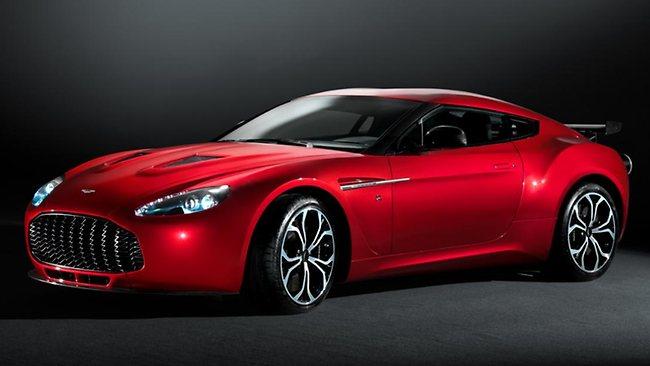Questions of identity
THERE'S no mistaking an Aston Martin and the new "muscular but elegant" V12 Zagato is no exception.

ALL cars look the same these days, don't they? Ask anybody. It's so often said I've given up the forensic case for the defence and confront the witness outright. "Do you mean you cannot tell a Mini from a Maserati? A Hummer from a Holden? The witness's reluctance to answer speaks volumes, m'Lud. I ask the jury to acquit."
However, I admit a determined prosecutor of the homogeneity charge could find a few wrinkles in my argument. There's a tendency among designers to swim in schools and car designers are no more immune to this instinct than any other sort. That's why so many cars these days have pronounced creases along their flanks. And LED running lights. And start buttons. Car trends can take a long time to be visible, but they are there.
There's another prosecution exhibit worth examining: the law itself. When it comes to emissions and safety, regulations everywhere have become stricter and more uniform, forcing car shapes in the same direction. Squeezing the last spark of energy from fuel, for example, means attention is focused on aerodynamics. It turns out that if you want a sedan to carve through the air efficiently, the boot must be tall. No maker can afford to ignore this and so sedans today all have big bums.
The result of this is that cars aimed at the same sorts of buyer can end up a little beige, especially in the mainstream where every penny counts. This is where branding comes in, and where designers earn their dosh. Anyone can make a bigger badge. The trick is to cultivate family resemblance and down-the-road recognition - the ability to spot one instantly from a distance. One that seldom gets confused with another is Aston Martin.
"We've established a very strong brand identity," says designer Marek Reichman. "It's important Aston Martins look like Aston Martins." They do, which is just as well because Aston has been adding models at an impressive rate for so small a maker.
At the beginning of the century it had two. Now it has seven, or 11 if you count convertibles separately. With the delivery recently of a One-77, Aston's $3 million limited edition supercar, to a Gold Coast owner, only one could not, in theory, be sighted here. That car is the Cygnet, a rebadged version of a Toyota city runabout called iQ that's sold in Europe and Japan. It stands out as different but many people, myself included, struggle to tell the others apart.
Has Aston gone too far and crossed the double white line between brand identity and uniformity? Reichman says Aston's identity is something other makers envy and the differences are there when you look. "If you had a showroom full of all our products, from a Cygnet to a One-77, they are very different although they are all recognised as Aston Martins," he says. "Other mainstream brands would love to have that coherence."
There's truth in this. It's rare to see more than one Aston at a time but when you do it's the differences that stand out. Aston's signatures, such as the shape of the grille or the side strakes, are potent recognition triggers. So powerful other brands imitate them. There are echoes of the Aston look in many more mundane cars.
Reichman says the One-77 and another limited-run car, the V12 Zagato, show how the look is evolving away from the softer shapes of the DB9 towards something more aggressive. "The One-77 is very sheer with its surface language, with much harder lines and negative surfaces," he says.
The V12 Zagato revives collaboration with an Italian styling house that produced a collector classic, the DB4 Zagato, 50 years ago. Reichman led the latest project, which will result in 150 V12 Zagatos being built, starting this month, and priced at about $800,000 in Australia.
He welcomed the freedom it brought. "We wanted this car to be not a retrospective but looking 50 years into the future," he says. "It needed to push the boundaries of Zagato design and allow Aston Martin's wings to flourish a bit more."
The new car celebrates the original DB4 Zagato by following its path into production. It appeared first as a racer, and so did the V12 Zagato. Race car aesthetics, such as its bonnet vents, are integral to the look. It also picks up Zagato touchstones, such as a double-bubble roof and round tail-lights. There were deliberate echoes, too, of the fuller forms that were the result of 1960s panel beating while there's a "little bit of fun" in the Z motifs of the grille mesh.
Like the original, Reichman wanted it to be both muscular but elegant, and even a little bit raw. "Part of that comes out of how quickly you do something. You're not going to over-refine. It's a bit more in-your-face."
So it's different but does it look like an Aston?
Of course it does. They all look like that, don't they?
______________________________
>> Philip King is The Australian's motoring editor.


